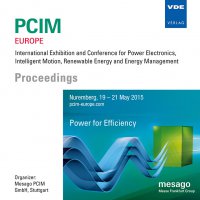Photovoltaic – Wind Energy – Hybrid System with Battery and Heat-Storage Path
Conference: PCIM Europe 2015 - International Exhibition and Conference for Power Electronics, Intelligent Motion, Renewable Energy and Energy Management
05/19/2015 - 05/20/2015 at Nürnberg, Deutschland
Proceedings: PCIM Europe 2015
Pages: 8Language: englishTyp: PDF
Personal VDE Members are entitled to a 10% discount on this title
Authors:
Bocklisch, Thilo; Lindner, Johannes (Chemnitz University of Technology, Germany)
Abstract:
The paper presents a simulation tool and latest results of an optimizing design and energy management concept for a decentralized, grid-connected photovoltaic (PV) - wind energy - hybrid system with a lead-acid- and/or lithium-ion-battery and a heat-storage path. The paper starts with an introduction, in which the principle structure of the decentralized management concept is briefly explained. The second part is a discussion of the time series of PV and wind energy supply and electricity demand (for a household application) on the basis of long-term measurement data for different reference objects. First goal is to demonstrate the supplementary nature of PV and wind power and to estimate the self-sufficiency-rates achievable without energy storage. This analysis is undertaken for different ratios of installed PV and wind power. Results for six different small wind energy turbines (SWT) and various mast heights are presented.The third part of the paper introduces a novel energy management with a peak-shaving-/power-to-heat-concept and a battery storage system. It is demonstrated that the selfsufficiency-rates can be increased up to ca. 90% by the usage of a hybrid battery storage system and an intelligent energy management concept. Simulation results are presented for a four-dimensional economic optimization of a combination of a PV plant and a small wind energy turbine relating to battery capacities, max. battery power, max. grid power and profits. Finally, six different hybrid system configurations are compared in reference to self-sufficiency-rate, investment costs, avoided electricity costs and profits.


